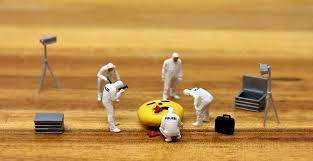Crime
Classification Manual Part I Chapter 4 15
A
STANDARD SYSTEM FOR INVESTIGATING AND CLASSIFYING VIOLENT CRIMES
SECOND
EDITION
John E. Douglas,
Ann W. Burgess, Allen G. Burgess, and Robert K. Ressler, Editors
A Framework
for Defining the Worst of Crimes
Many of the aggravators noted denote behavior
that distinguishes a particularly unusual criminal at work. As such, perpetrators
who meet such aggravators earn membership in a narrowed class of defendants.
Other aggravators, however, speak more to the goals of society than the
exceptional nature of the crime. A police officer is armed, for example, and
engages with criminals and in hazardous duty. Society has an interest in protecting
law enforcement. Yet when a perpetrator kills a police officer in attempting to
escape, that clearly does not reflect an unusual criminal mentality or ensure that
such a crime was anything more than a spontaneous, if dramatic, choice. In
other words, some aggravators, such as killing in the course of committing a
felony, attach themselves to deterrence issues, while others distinguish what
are truly unusual, and the worst of the worst crimes.




Comments
Post a Comment